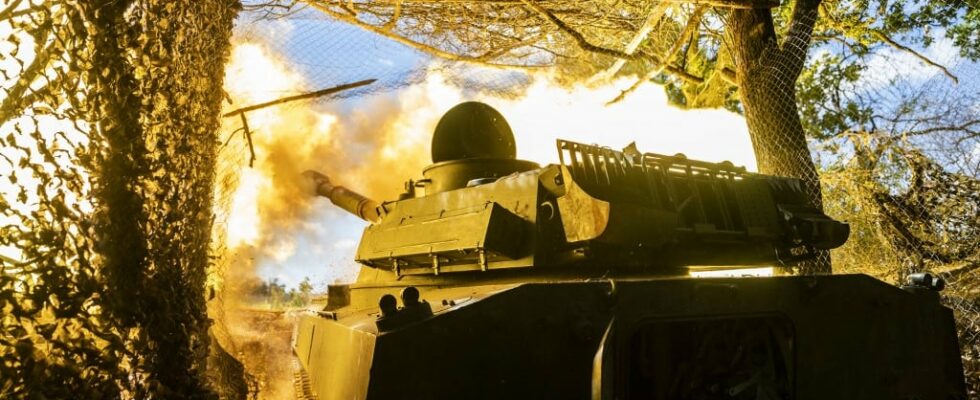The scorching temperatures of this early summer in Ukraine are constantly compounded by the heat of the fighting. As has been the case several times in recent weeks, on July 11 Moscow claimed the capture of a new village, Voskhod, about fifteen kilometers northwest of Avdiivka, in the east of the country. Two days earlier, it was Yasnobrodivka, 10 kilometers further south. In both cases, fewer than 100 inhabitants, like the thousands of hamlets that dot Ukraine. These are meager captures, far from those of the much more strategic cities of Avdiivka in February, or Bakhmut a year earlier.
Despite attacks that have redoubled in intensity since the spring, Moscow is still struggling to show convincing results on the front. “We can hardly speak of success for the Russians,” confirms General (2S) Jérôme Pellistrandi, editor-in-chief of the National Defense Review. They are managing to gain some ground, but at this rate it will take them more than a century to conquer Ukraine.” The figures do not play in Moscow’s favour: since the beginning of the year, the Russians have only taken 560 km2 at the cost of very heavy losses.
Front stabilized in the north
At the end of May, British intelligence had estimated the average daily casualties during the month at 1,200 – the highest level since the beginning of the war – and their total number at 500,000 (killed, wounded, captured). Despite this heavy human toll, the surprise attack launched on May 10 in the northern Ukraine, in the Kharkiv region, is now marking time.
In Vovchansk, a small town of 17,000 inhabitants before the war located some 5 kilometers from the Russian border, the Ukrainians are still firmly holding their positions after two months of intensive fighting and bombardments. In an attempt to continue to advance in the face of localized counterattacks launched by kyiv’s forces, the Russian army has even been forced to redeploy men there in recent weeks.
“The Russian army was ordered to put the city of Kharkiv [NDLR : capitale de la région du même nom] within artillery range to bombard it, Volodymyr Zelensky commented on July 10 in Washington. Their advance has stopped and we are now pushing the Russian army out of the areas near Kharkiv.” After months of facing a glaring shortage of ammunition, the increased flow of Western aid, led by the United States, has gradually allowed Ukrainian forces to stabilize critical areas of the front. “The Ukrainian ammunition shortage opened a window of opportunity for the Russians in the spring, but they have not really managed to take advantage of it,” General Pellistrandi said. “The situation is less critical for kyiv today.”
The Chassiv Yar Lock
Further south, the Russian army has also been redoubling its efforts since April to try to take the small town of Chassiv Yar, about 5 kilometers west of Bakhmut. Although after months of repeated assaults, Moscow announced in early July that it had conquered a first district, taking this town, still largely in Ukrainian hands, is particularly perilous. In an op-ed published on July 9, Lieutenant General Ivan Havriliuk, Ukraine’s First Deputy Minister of Defense, estimated that the Russian offensive in the area had already cost them 5,000 men.
Chassiv Yar remains nonetheless an obligatory passage point for Moscow’s forces. “In the short term, it is one of their main objectives,” confirms General Nicolas Richoux, former commander of the 7th Armored Brigade. “It is a lock on the road to Sloviansk and Kramatorsk, which the Russians want to seize to complete the conquest of the Donetsk region.” These two cities – only about ten kilometers apart and with a total population of nearly 300,000 – today constitute the main Ukrainian stronghold in the sector. De facto regional capital since the capture of the city of Donetsk by pro-Russian separatists in 2014, Kramatorsk also houses the regional headquarters of the Ukrainian army.
“For the moment, the Russians do not seem able to concentrate enough resources on a main axis to break through in depth, points out General Pellistrandi. They are therefore favoring small, progressive advances with successive waves of infantry supported by armored vehicles.” This strategy, as ineffective as it is costly in terms of men, makes the conquest of the Donetsk oblast appear to be a very distant objective. Just to take the city of Bakhmut, in May 2023, Russian forces fought for more than ten months. “The Ukrainians have considerably reinforced the sector located in Chassiv Yar and the cities of Sloviansk and Kramatorsk, notes General Richoux. Trying to advance in the area will necessarily be long and difficult.” The end of the war is not for tomorrow.
.
